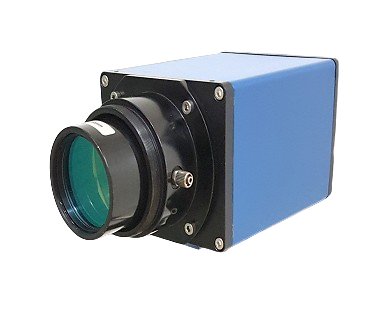Mastering Temperature Measurement in Ferrous and Non-Ferrous Rolling & Continuous Casting
In this guide, we bring together practical insights and advanced methodologies for precise temperature measurement in Rolling & Continuous Casting processes for both aluminum and steel. Based exclusively on real-world applications and industry-proven solutions featured throughout our site, this resource outlines the key principles, challenges, and technologies that enable optimal control across every stage of metal transformation — from reheating furnaces to casting zones and solidification lines.
Whether you’re monitoring strip temperature during aluminum hot rolling or ensuring accurate readings in steel billet casting, this guide will help you implement the right tools and techniques to improve product quality, reduce defects, and optimize production performance.
Table of Contents
What You'll Learn in This Guide
This guide will help you understand:
- The critical role of temperature measurement in hot rolling and continuous casting of aluminum and steel
- How to select and position infrared pyrometers at key process points — including furnaces, rolling stands, casting molds, and cooling zones
- Best practices for measuring surface temperature in challenging environments with low or changing emissivity
- How to calculate solidification temperature and cooling rate in real-time
- Strategies for integrating temperature data into automated control systems
- Common application challenges — and how AST’s tailored solutions overcome them
Whether you’re operating a strip caster, billet caster, or hot rolling mill, this guide gives you actionable insights to improve quality, consistency, and process stability.
Why Temperature Measurement Matters in Rolling & Continuous Casting
Accurate temperature measurement in Rolling & Continuous Casting is critical for achieving consistent metallurgical properties, product quality, and process efficiency. In hot rolling, precise control of temperature ensures proper material deformation, surface finish, and dimensional accuracy. In continuous casting, monitoring solidification temperature is vital to prevent internal cracks, segregation, or misruns. Even minor deviations can lead to defects, increased scrap, or unplanned downtime. By implementing reliable infrared pyrometry at key process points, manufacturers can maintain tight control, reduce variability, and ensure repeatable, high-quality output in both aluminum and steel production.

How This Guide Is Structured
To give you a clear understanding of temperature control across the metal transformation process, this guide is divided into two focused parts:
Part A – Hot Rolling Temperature Measurement- Covers temperature monitoring during aluminum and steel hot rolling processes — from furnace discharge through deformation zones to coil formation.
Part B – Continuous Casting Temperature Measurement- Focuses on temperature control and solidification tracking during continuous casting of aluminum and steel — including mold exit monitoring, strip cooling rate, and inline diagnostics.
A. Hot Rolling Temperature Measurement
1. Introduction: Why Rolling & Continuous Casting Temperature is Critical
Accurate temperature measurement during hot rolling and continuous casting ensures optimal metallurgical properties, dimensional accuracy, and process stability. In hot rolling, precise slab and strip temperature control prevents defects and guarantees the correct grain structure. Reliable monitoring leads to fewer reworks, improved surface quality, and reduced energy consumption.
2. Measurement Technologies and Industrial Applications
- Infrared Pyometers – Slab, Strip & Coiling Operations
- Non-contact infrared pyrometers are perfect for real-time monitoring at multiple stages: reheating furnaces, slab discharge, strip rolling, and coil cooling.
- Multi-wavelength sensors compensate for changing emissivity, dust, steam, and surface conditions that affect signal reliability.
- Recommended Models: A250/A450 series for slab/strip; A5-EX series for aluminum strip temperature.
- Infrared Line-Scanners for Strip Profiling
- High-speed line scanners measure thermal distribution across strip width and length.
- E.g., scanner placed 4 m above a 1.5 m wide strip scans full surface in ~9 s at 5 m/s speed.
See how our infrared line scanner captures full-strip temperature distribution in real time during aluminum hot rolling:
- Solutions for Harsh Mill Environments
Pyrometer selection must consider extreme conditions:
- Steel Mills: 1000–1300 °C, high ambient heat (70–80 °C), steam, scale, misalignment.
- Aluminum Mills: low emissivity (0.04–0.05 for bright strip), requiring Dx/Dy tuning, adjustable spot size and furnace avoidance triggers.
- Cooling systems recommended for sensor longevity (e.g., water jackets)
- Pyrometer Positioning on Hot Rolling Lines
In challenging hot rolling environments, Accurate Sensors Technologies’ pyrometers are installed strategically to minimize optical interference and maximize measurement reliability. Key integration points include shaded areas, such as beneath bridges or coilers, where external light is blocked. For instance, in a Mannesmann Demag hot rolling line and another project in Australia, AST pyrometers were successfully deployed under structural covers to monitor aluminum coil temperatures during rolling and coiling. In these setups, pyrometers effectively handle:

- Strong steam or emulsion vapors
- Reflective aluminum surfaces
- Variable emissivity between rolling stages
Comparative measurements vs. handheld thermocouples confirm high accuracy and consistency under industrial conditions.
3. Challenges & Calibration
- Emissivity variations: slab oxidation, surface finish, alloy composition change IR signal; multi-wavelength systems and periodic calibration correct for this.
- Environmental interferences: dust, steam, scale, and heat affect readings—proper sealing, airflow, and shielding are required. accuratesensors.com +2 accuratesensors.com +2 accuratesensors.com +2
- Dynamic process variables: rapid strip velocity and temperature gradients demand fast sensors with agile algorithms.
4. Best Practices and Recommendations
Positioning:
- Slab measurement right at furnace exit—crucial for controlling heating cycles
- Strip monitoring at multiple rolling stands ensures consistent deformation and grain quality.
Calibration setup:
- Start with Dx ≈ 1.02 and Dy ≈ –0.032; fine-tune using reference thermocouple data.
Sensor selection:
- A250/A450 for high-temperature steel processes
- Use multi-wavelength models (A5-S-IN, A5-S-EX) for low-emissivity bright surfaces.
Protection gear:
- Use water cooling or air-purge jackets in dirty, hot mill environments
Watch: Temperature Measurement in Ferrous and Non-Ferrous Rolling
Accurate Temperature Measurement in Aluminum Hot Rolling Process
Accurate Aluminum Slab, Sheet & Strip Temperature Measurement in Hot Rolling
Temperature Measurement for Steel Hot Rolling and Continuous Casting
Monitoring Temperature During Aluminum Strip Hot Rolling
Part A Summary- Temperature Measurement in Ferrous and Non-Ferrous Rolling
In this section, we’ve detailed how accurate infrared pyrometry and scanning systems support temperature control in hot rolling for both aluminum and steel. From furnace discharge to coiling, these solutions ensure process accuracy, energy efficiency, and product quality.
B. Continuous Casting Temperature Measurement
1. Introduction: Why Temperature Monitoring in Continuous Casting Matters
Accurate temperature measurement in continuous casting processes is critical for ensuring metallurgical consistency, surface quality, and structural integrity. Whether casting aluminum strips or steel billets, maintaining the correct thermal profile prevents issues like internal cracks, incomplete solidification, or non-uniform grain structure. Monitoring at the mold exit and throughout the casting line allows for optimized cooling control and defect reduction.
2. Measurement Technologies and Setup
- Fixed Infrared Pyrometers at Mold Exit
Fixed pyrometers, such as the A5-EX, are ideal for real-time temperature monitoring at the mold exit in both aluminum and steel continuous casting lines. These sensors provide stable, non-contact readings even in challenging conditions with steam, water spray, and fluctuating surface emissivity. They are typically mounted 400–600 mm from the strip or billet surface and must be shielded from ambient heat and moisture.
Optimize Continuous Casting with Precision Pyrometry

- Thermal Scanning for Strip Surface Control
Line scanners are used to create a full thermal profile across the width of the aluminum strip. This allows for early detection of uneven cooling, cold edges, or improper solidification — which can compromise mechanical properties or lead to deformation. These scanners operate continuously and are typically installed just past the mold exit, in the secondary cooling zone.

- Dual-Stage Measurement for Aluminum vs. Steel
While the core principles of temperature measurement apply to both aluminum and steel casting, key differences include:
- Aluminum: lower emissivity, wider strip formats, lower process temperatures (typically 300–700 °C)
- Steel: higher temperatures (up to 1300 °C), billet geometry, and scale formation
Sensor selection and calibration must reflect these conditions. AST offers tailored solutions for each use case.

- Real-Time Thermographic Strip Monitoring
Accurate thermal monitoring of metal strips during continuous casting is critical for identifying temperature inconsistencies and ensuring uniform quality across the product width. AST’s scanning pyrometers provide real-time thermographic strip monitoring by scanning across the full width of moving strips, capturing detailed temperature profiles with high spatial and temporal resolution.
Thermal Strip Profiling in Motion
Our application engineers implemented a real-time scanning solution for a 255 mm wide metal strip moving at 12.5 m/min. The system captured the temperature distribution over a 2.1-meter section in a single cycle, allowing operators to detect thermal variations across the material.
As strip speed changes, the length of the scanned section also varies:
- At 5.5 m/min → 0.9 m scanned
- At 7 m/min → 1.1 m scanned
- At 10 m/min → 1.6 m scanned
- At 14 m/min → 2.3 m scanned
The scanner completes a full measurement cycle in 10.2 seconds, using 17 incremental movements to cover the strip width of 255 mm. The working distance for this setup is 1740 mm, and micro-stops are performed every 10 steps (each step measuring ~0.05°C), ensuring high-fidelity temperature readings across the entire width.
This advanced scanning approach enables operators to visualize a continuous thermal image, helping to:
- Detect hot or cold spots
- Adjust cooling systems in real time
- Improve overall process control and consistency
AST Solution Highlight
The data is processed and visualized through AST’s proprietary application software, enabling:
- Real-time thermal image generation
- Profile comparison between batches
- Integration with quality control protocols
3. Calibration and Environmental Challenges
Temperature accuracy in continuous casting is affected by:
- Variable emissivity due to oxidation, surface finish, and alloy composition
- Ambient interference from steam, dust, water mist, and heat reflections
To overcome this, AST recommends:
- Multi-wavelength or emissivity-compensating pyrometers
- Installation of air-purge or water-cooling systems around sensors
- Periodic on-site calibration against thermocouple data
4. Best Practices and Integration Tips
- Place pyrometers as close as possible to the mold exit (ideally 400–600 mm), ensuring unobstructed line of sight.
- Avoid installation angles that pick up secondary reflections or radiation from adjacent surfaces.
- Choose sensor models with suitable optics and field-of-view (FOV) based on strip width and installation height.
- Integrate sensors with PLC or SCADA via 4–20 mA or digital output for real-time control.
- Use AST NET software for visualization and data logging.
Watch: Temperature Measurement in Ferrous and Non-Ferrous Continuous Casting
Continuous Casted strip application
Advanced Temperature Monitoring in Aluminum Continuous Casting – AST Solutions 2024
Continuous Casting Process for Aluminum Tubes | High-Precision Infrared Temperature Measurement
Optimize Continuous Casting with Precision Pyrometry – A5-S-IN in Action
Real-Time Thermographic Strip Monitoring in Continuous Casting
Part B Summary- Temperature Measurement in Ferrous and Non-Ferrous Continuous Casting
In this section, we explored advanced methods of temperature measurement in continuous casting for both aluminum and steel. From mold exit pyrometry to full-width strip scanning, Accurate Sensors Technologies provides the tools needed to ensure product quality, reduce scrap, and stabilize solidification processes in real time.
Looking for more industrial infrared pyrometers?
Explore our complete range of Aluminum Pyrometers for Extrusion, Casting, Rolling, Forging



